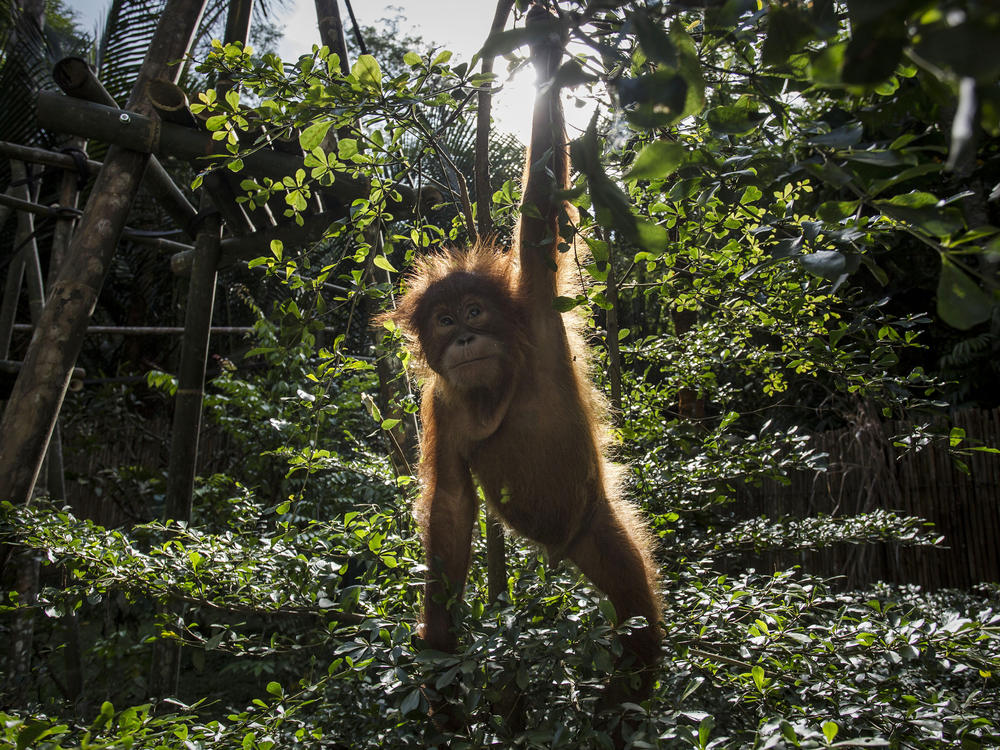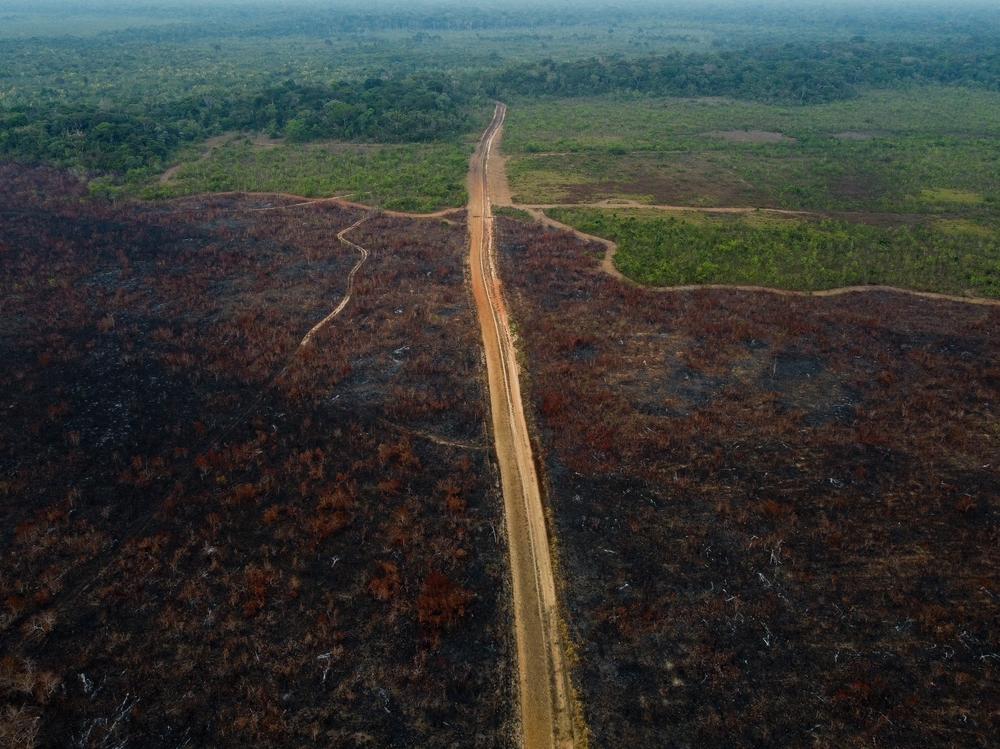Section Branding
Header Content
A UN biodiversity convention aims to slow humanity's 'war with nature'
Primary Content
Delegates from around the world are gathering in Montreal this week to address what United Nations Secretary General Antonio Guterres has described as "humanity's senseless and suicidal war with nature."
The UN Convention on Biological Diversity (CBD), which kicked off Tuesday, comes at a critical time. More than a million species are at risk of extinction globally, many within decades, because of human actions. Destruction of forests, wetlands and other natural ecosystems that clean air and water for the world's now 8 billion human residents continues worldwide. Climate-warming greenhouse gas emissions continue to rise.
The World Economic Forum lists biodiversity loss as one of the top three global risks, because the loss of nature doesn't just impact plants and animals.
"If there's no food, there's no clean air to breathe in, there's no water, there are no medicines which are dependent on biodiversity resources, where are we? What are we?" said Elizabeth Maruma Mrema, the executive secretary of the convention. "It means we will perish just as the animals and plants."
Here's what you need to know about the nearly two-week convention:
What is the Convention on Biological Diversity?
Remember the climate conference, COP27, in Egypt last month? The CBD is a lot like that. It's a conference of parties — more than 190 countries in total (though, notably, not the U.S.) — gathered with the intent of slowing the decline in nature.
This is the 15th meeting of the CBD. A critical one that's long-overdue. Previous planned conventions were disrupted by COVID-19, the kind of pandemic that scientists say becomes more likely as we continue to fracture and damage the natural world.
What's so special about this one?
Every ten years, the CBD negotiates something called a Global Biodiversity Framework. It sets goals for member nations over the next decade. In this case, countries will try to agree on a framework that lasts until 2030.
What are the main goals of this convention?
Generally and bluntly speaking, the main goal is to stop the bleeding.
A study published last year suggests just 3% of the world's ecosystems are still ecologically intact — meaning they still support healthy populations of their native species and haven't been tarnished by human actions.
The assessment, which was bleaker than previous studies, recommends urgent efforts to protect those areas and restore others, "while this is still possible."
A report from the world's leading scientists shows humans have significantly altered 75% of the Earth's land and two-thirds of its oceans.
"Fundamentally, we need to safeguard our life support systems in the face of accelerating nature loss," said Rebecca Shaw, chief scientist at the World Wildlife Fund. "Inaction is absolutely not an option because it will put us only at greater risks of pandemics, which none of us want, it undermines our efforts on securing our climate, and it makes our food production systems much more vulnerable."
Ok, but what specifically are they looking at?
The draft framework for the convention lists more than 20 goals (you can read it here).
The flashiest item on the list is a pledge by member countries to protect 30% of their land and water by the year 2030, a concept known as 30 by 30. The Biden administration has pledged to do that in the U.S., as have scores of other countries.
Big questions remain though about what, specifically, will count as conserved or protected land. And there are concerns from indigenous groups that the concept could be used as a pretense to displace indigenous people from their lands, similar to how the U.S. national park system was used to displace Native Americans.
"There is a lot of evidence that shows traditional lands and territories managed by indigenous peoples are the most important areas when it comes to biodiversity," said Viviana Figueroa, a legal expert at the International Indigenous Forum on Biodiversity, who's part of the negotiations in Montreal. "So it would be a high interest to take our land. This is something we don't want."
Wait... why isn't the U.S. part of the Convention on Biological Diversity?
The U.S. is one of just four UN members that hasn't signed on to the CBD. The reason is politics.
The CBD was ratified in 1993, with input from the U.S. The Clinton administration wanted to sign the treaty but was blocked by a Republican majority in the Senate.
Conservation groups have called on the Biden administration to join the CBD. It rejoined the Paris climate agreement after the U.S. left under former president Donald Trump.
The Biden administration has not made an effort to sign on to the treaty but is expected to have a behind-the-scenes role in the negotiations. It has made biodiversity a priority, appointing a first-ever special envoy for biodiversity and water resources, launching its America the Beautiful initiative, aimed at conserving and restoring natural ecosystems, and has started work on making nature a part of the country's economic calculus.
What are the expected tension points?
As we saw at last month's climate conference in Egypt, these conventions often end without interested parties getting everything they want. Delegates expect there to be hard negotiations over the wording and substance of all the proposed goals.
Similar to the climate conference, the biggest tension point is likely to revolve around the issue of financing. Conserving nature may be crucial to sustaining the global economy in the long-term, but it also costs money up front.
Smaller, developing nations, which are disproportionately suffering the effects of climate change and biodiversity loss, want to see stronger financial commitments from richer, developed countries, which have economically benefited from polluting the world's environment.
Richer countries have a long history of promising to help finance climate and biodiversity projects but haven't always followed through. Progress was made with the establishment of a fund for "loss and damage" — the climate impacts smaller countries are feeling right now — at the recent climate conference but questions remain about who will put money into it and when.
The first draft of the biodiversity framework identified a $700 billion annual financing gap to reverse nature's decline. Questions will undoubtedly come up over who should help pay to resolve that.
Will an agreement actually slow nature loss?
That is the many dollar question. And there's reason for skepticism. The previous ten-year framework set by the CBD in 2010 established 20 conservation and nature-related targets for the year 2020. None of them were achieved.
More than 10,000 people are attending this year's CBD, including NGOs and businesses.
Shaw said the broad interest from the public and private sector is a hopeful indication that the biodiversity crisis is finally gaining broad international recognition.
"We have seen a ratcheting up in commitment and focus on climate change in the last 20 years," Shaw said. "And it's because the impacts have become unbearable globally. Like you can't ignore it anymore. We're there on the nature side."
Now, she said, it's time to act.
Copyright 2022 NPR. To see more, visit https://www.npr.org.
Bottom Content





